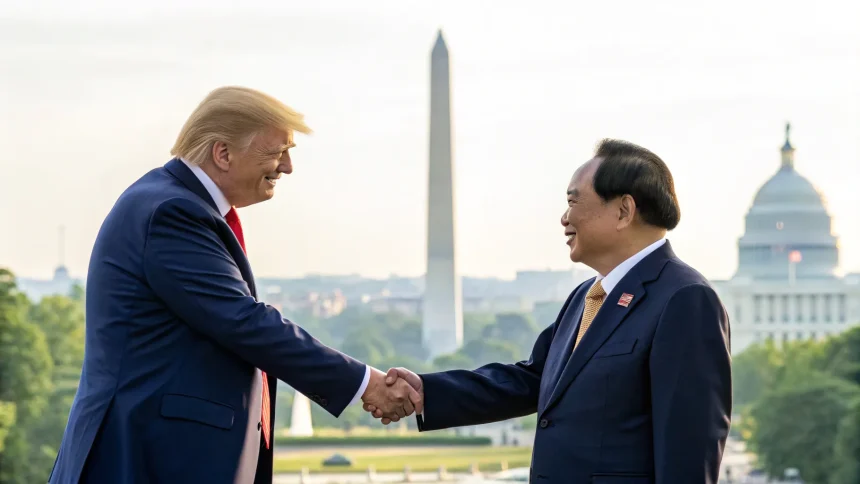President Donald Trump announced that the United States has reached a trade deal with Vietnam. The agreement marks a new chapter in the economic relationship between the two nations, which have seen growing commercial ties in recent years despite their complicated historical relationship.
The announcement comes as the U.S. continues to reshape its trade relationships across Asia. While specific details of the agreement were not immediately available, the deal is likely part of the administration’s broader strategy to balance trade relationships and create new market opportunities for American businesses.
Strategic Importance
Vietnam has emerged as an important trading partner for the United States, particularly as companies have sought to diversify supply chains away from China amid ongoing trade tensions. The Southeast Asian nation has become a manufacturing hub for electronics, textiles, and other goods.
Trade between the two countries has grown substantially over the past decade. U.S. exports to Vietnam include agricultural products, machinery, and aircraft, while Vietnam primarily exports manufactured goods such as clothing, furniture, and electronics to American markets.
The new trade agreement may address longstanding U.S. concerns about Vietnam’s trade practices. The Trump administration had previously criticized Vietnam for its trade surplus with the United States and questioned some of its currency policies.
Regional Implications
This deal comes at a time of shifting economic alliances in Southeast Asia. After the U.S. withdrawal from the Trans-Pacific Partnership in 2017, Vietnam has sought to maintain strong economic ties with America while also participating in regional trade agreements like the Comprehensive and Progressive Agreement for Trans-Pacific Partnership (CPTPP).
The agreement with Vietnam may signal the U.S. intent to strengthen economic engagement in the region as a counterbalance to China’s growing influence. Trade experts note that Vietnam has positioned itself as an alternative manufacturing base as companies reconsider their operations in China.
“The U.S.-Vietnam relationship has transformed dramatically over the past 25 years,” said a State Department official in a recent briefing. “From former adversaries to comprehensive partners, our economic ties have been a key driver of this positive change.”
Economic Benefits
For American businesses, the deal could potentially lower barriers to the Vietnamese market of nearly 100 million consumers. Vietnam’s growing middle class represents an attractive opportunity for U.S. companies in sectors ranging from technology to consumer goods.
From Vietnam’s perspective, secured access to the American market is crucial for its export-driven economy. The country has worked to attract foreign investment and position itself as a manufacturing alternative to China.
The agreement may include provisions on:
- Tariff reductions on key products
- Intellectual property protections
- Digital trade rules
- Labor standards
The deal follows years of growing commercial activity between the two nations. U.S.-Vietnam bilateral trade reached nearly $90 billion in 2020, a massive increase from just $450 million in 1995 when diplomatic relations were normalized.
Business groups from both countries have generally supported closer trade ties, though some American manufacturing sectors have expressed concerns about competition from Vietnamese imports.
As implementation details emerge in the coming weeks, analysts will be watching closely to see how this agreement fits into the broader picture of U.S. trade policy in Asia and what specific benefits it might bring to businesses and consumers in both countries.









